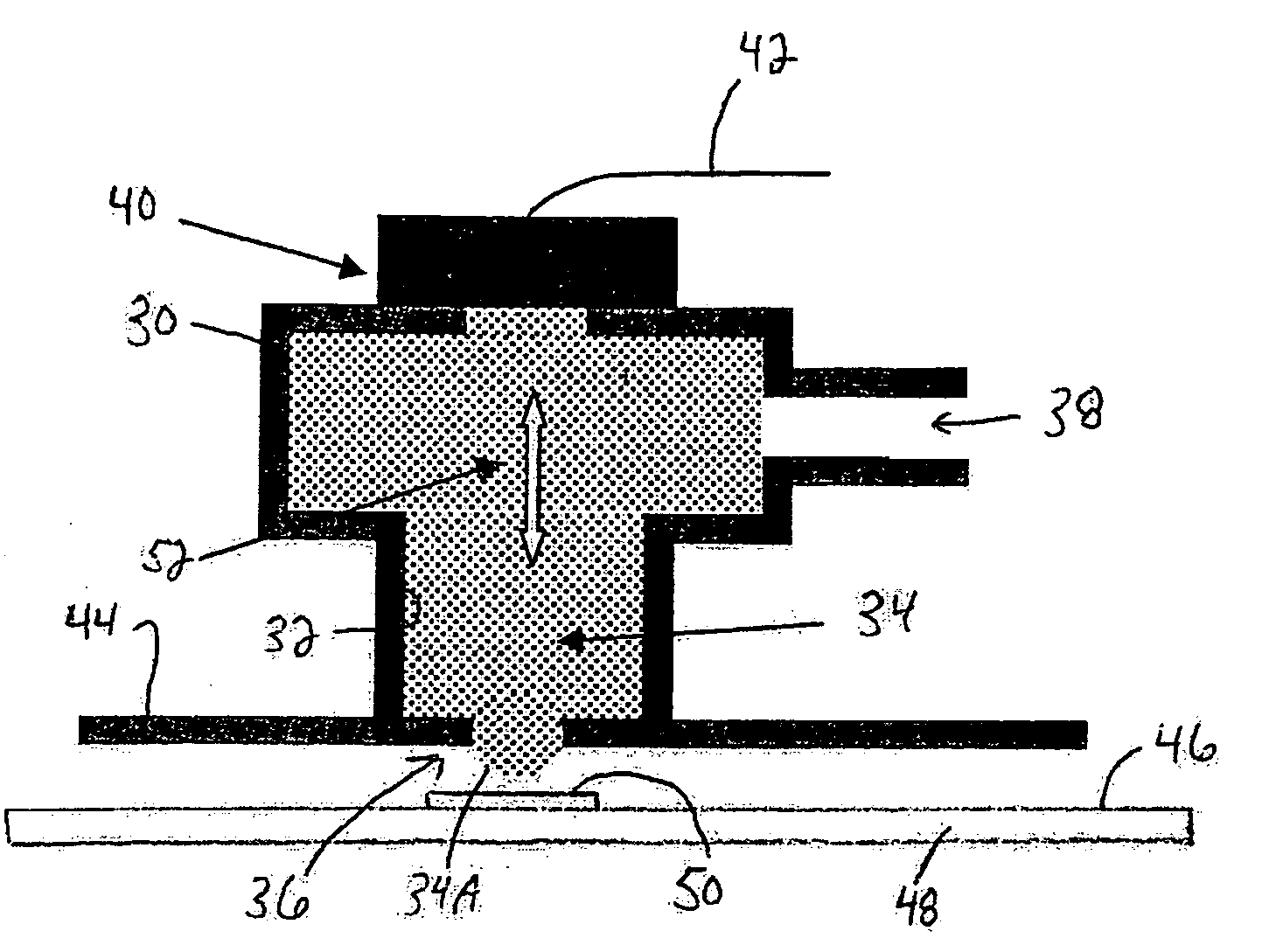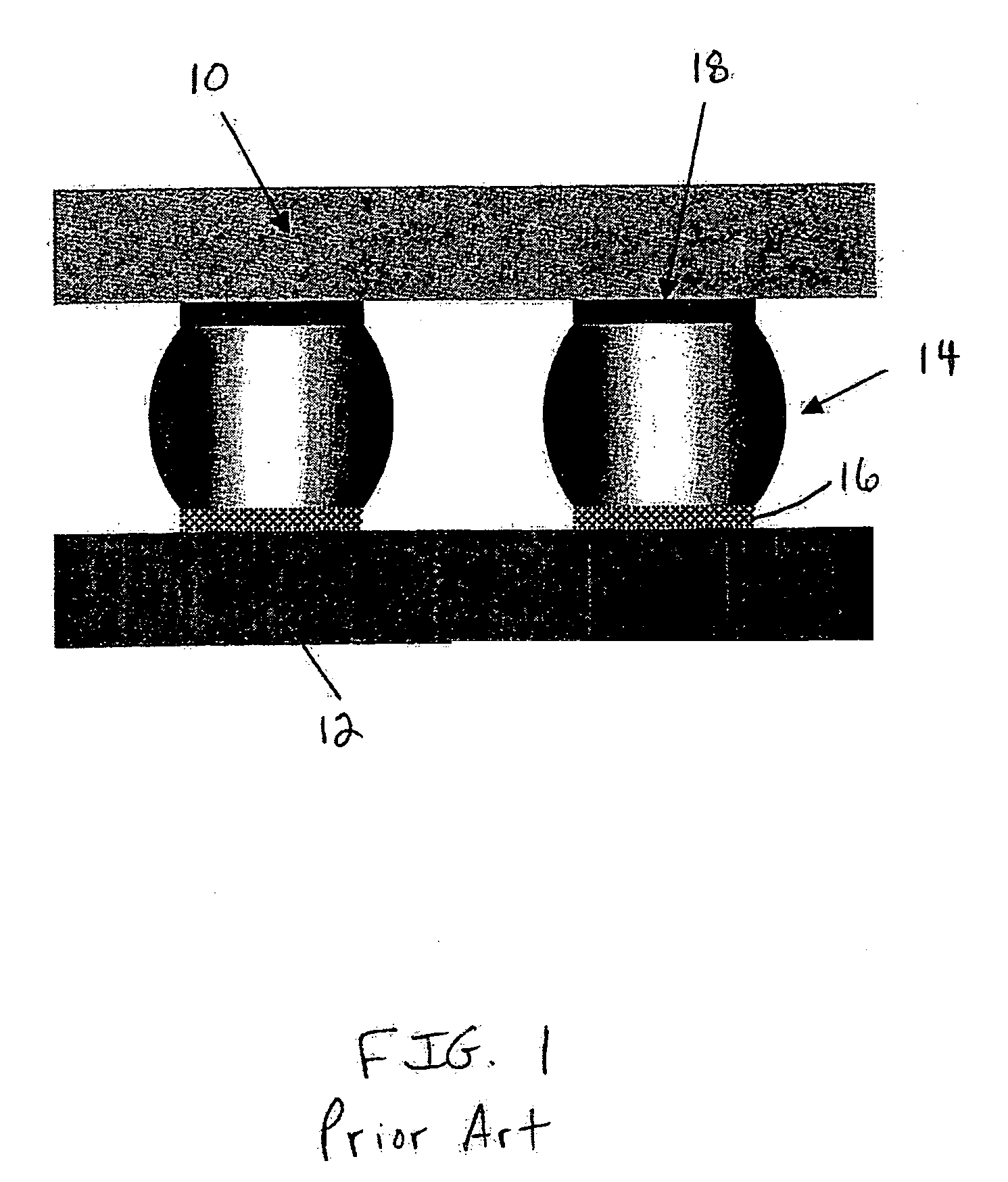Tools and methods for forming conductive bumps on microelectronic elements
a technology of microelectronic elements and tools, applied in the field of microelectronic package manufacturing, can solve the problems of difficult dislocation, chemical reduction, difficult dislocation, etc., and achieve the effect of simplifying the removal of alumina skin and facilitating wetting and bonding
- Summary
- Abstract
- Description
- Claims
- Application Information
AI Technical Summary
Benefits of technology
Problems solved by technology
Method used
Image
Examples
Embodiment Construction
[0045] Preferred embodiments of the present invention modify a C4NP tool, or a tool having comparable functionality to a C4NP tool, to apply conductive bumps to the bond pads on a semiconductor wafer or chip. In addition, preferred embodiments of the present invention provide for different metals for a UBM used for flip-chip interconnects than may usually be employed in the prior art.
[0046] Bond pads on semiconductor wafers are often slightly recessed with respect to the uppermost features, which usually comprise a passivation layer. By placing under a C4NP tool a semiconductor wafer having UBM on the bond pads, each bond pad may be covered in a thin layer of solder. As described above, it has been determined that applying ultrasonic pressure waves to a pool of molten solder when the molten solder is in contact with an oxidized aluminum surface may catalyze wetting. Preferred embodiments of the present invention advantageously employ this finding by modifying a C4NP tool or C4NP-li...
PUM
 Login to View More
Login to View More Abstract
Description
Claims
Application Information
 Login to View More
Login to View More - R&D
- Intellectual Property
- Life Sciences
- Materials
- Tech Scout
- Unparalleled Data Quality
- Higher Quality Content
- 60% Fewer Hallucinations
Browse by: Latest US Patents, China's latest patents, Technical Efficacy Thesaurus, Application Domain, Technology Topic, Popular Technical Reports.
© 2025 PatSnap. All rights reserved.Legal|Privacy policy|Modern Slavery Act Transparency Statement|Sitemap|About US| Contact US: help@patsnap.com



